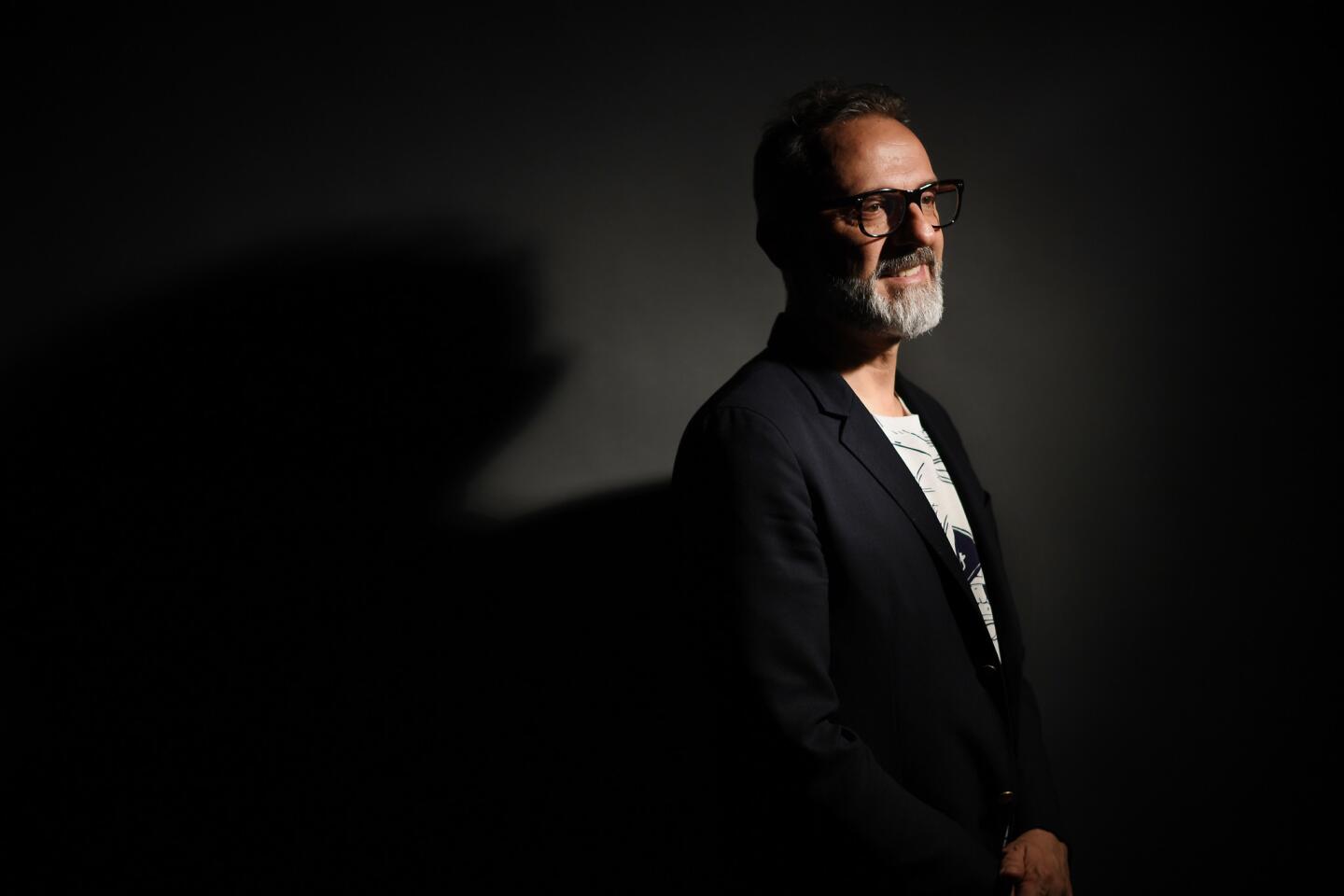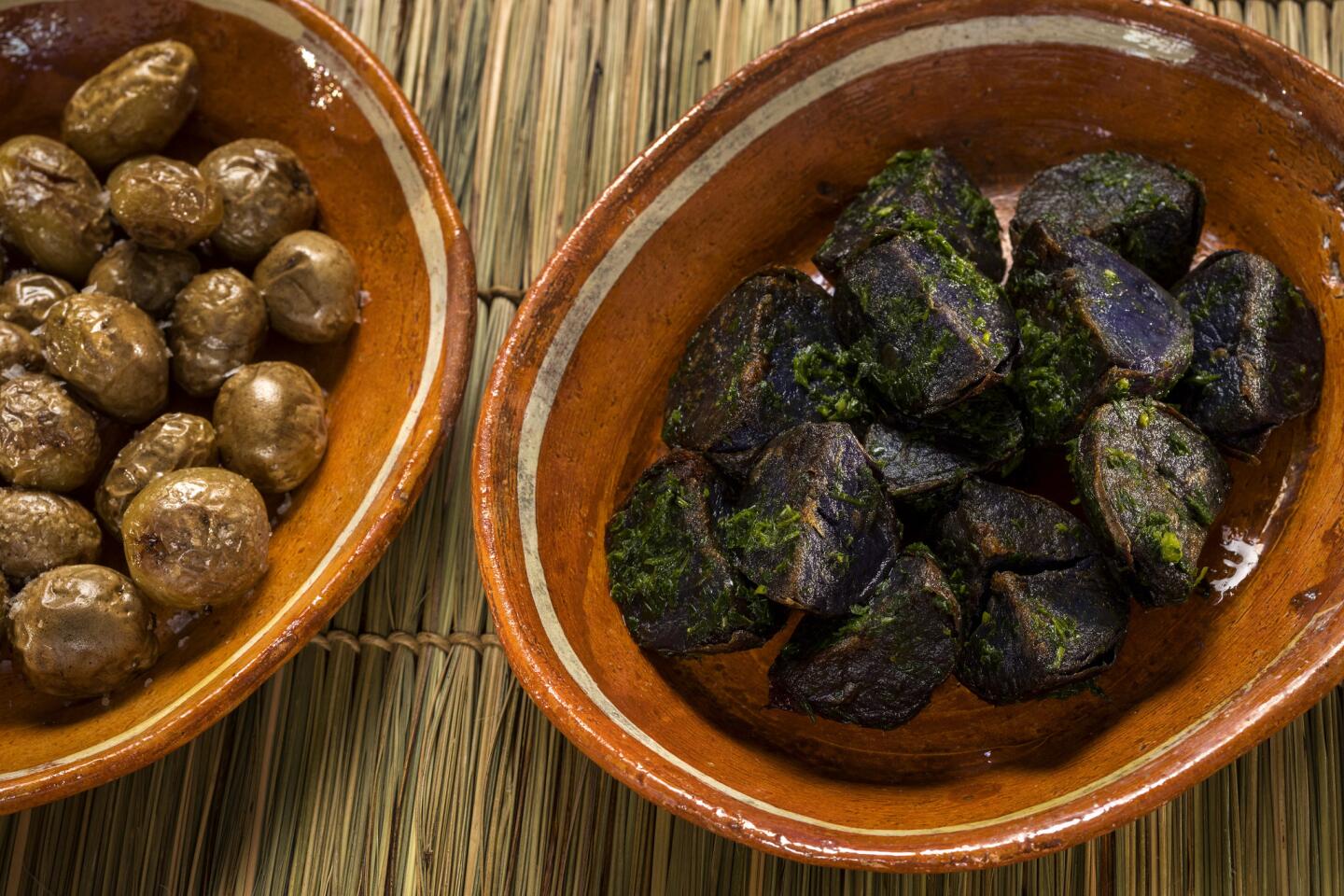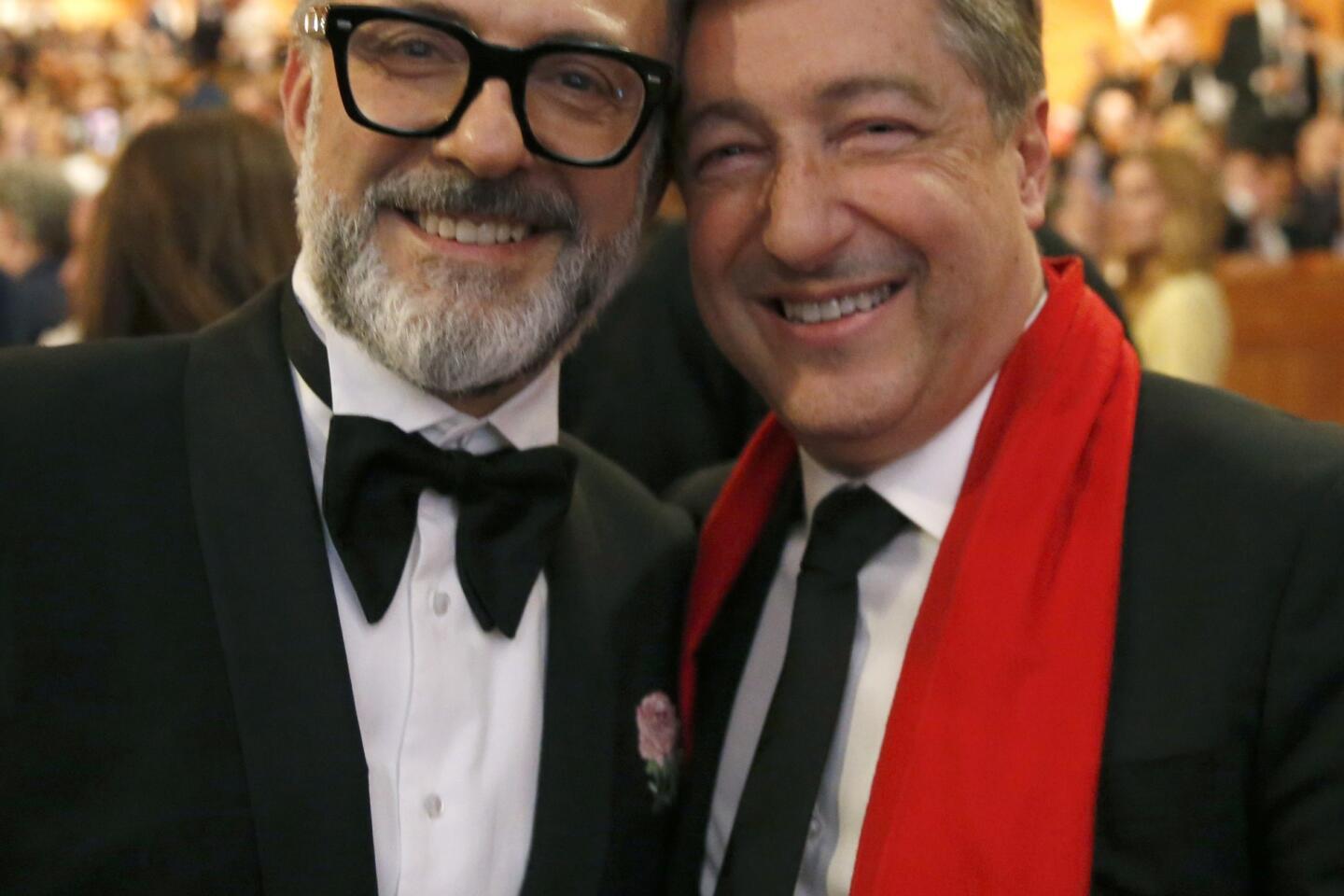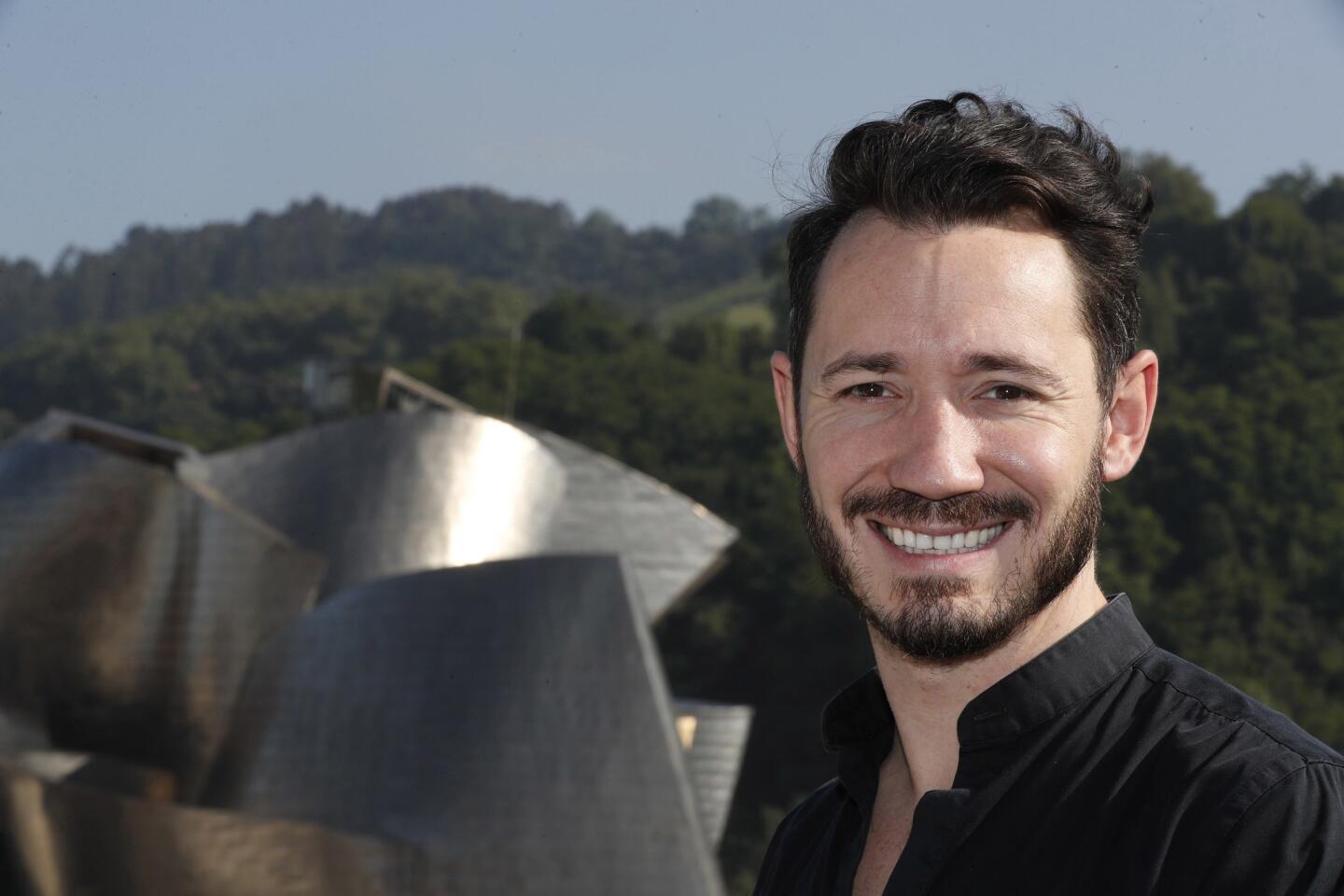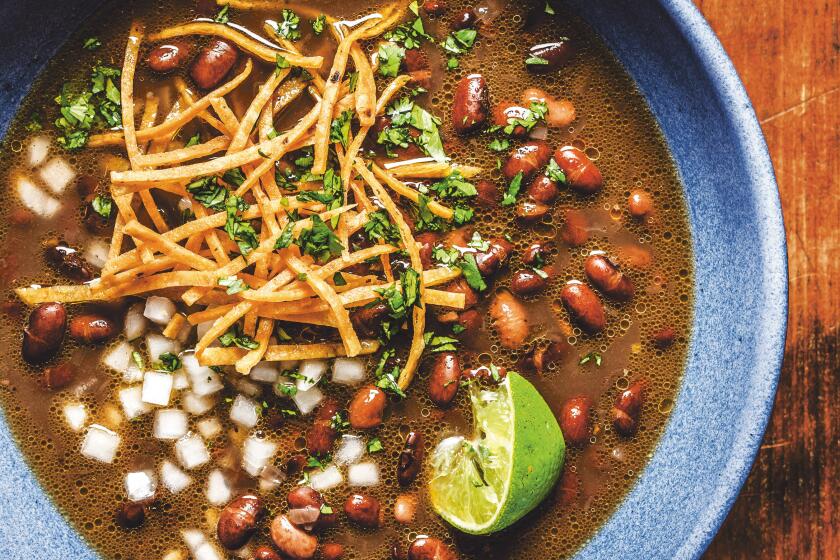Jonathan Gold looks over the 2018 World’s 50 Best Restaurants list and names some notable omissions
If you’d been with me at Osteria Francescana in Modena, Italy, last spring, you would have tasted sardines that turned out to be mysteriously crisp fish sandwiches, an eel flanked by the things it might have swum past in the Po River, and an elegant bonbon crafted from chocolate and aged woodcock and crowned with a sliver of gold leaf. Other dinners have included camouflage-themed risotto flavored with puréed food scraps, and a composition, made with five different vintages of Parmesan cheese, that explored no less than the concept of time.
Chef Massimo Bottura’s Osteria Francescana was named the best restaurant in the world Tuesday in the World’s 50 Best Restaurants ceremony in Bilbao, Spain. It was also best in 2016, and was No. 2 last year. This year’s No. 2 was El Celler de Can Roca, up near the French border in Girona, Spain, which was best in 2013 and 2015; No. 3 was Mirazur, on the French Riviera near the Italian border, and No. 4 was 11 Madison Park in New York (sister restaurant to NoMad in Los Angeles), which was first last year. (Noma in Copenhagen, which won best four times this decade, was closed most of last year.)
What happens when one of the world’s best chefs cleans out your fridge »
Bottura is among a small number of today’s chefs for whom a meal is less about the actual food than it is a chance to tell a story through the medium of food, and while his cooking is actually delicious, that dish of local eel with apples and burnt vegetables takes on meaning when you are told that it represents a specific incident in Modenese history. The bit of sole, hidden under crisp leaves of paper made from dehydrated seawater, might not derive quite so directly from 1960s Arte Povera as Bottura may lead you to believe, but it certainly has the flavor of the movement, and I did see the chef gasp with pleasure at the Alberto Burri wall in the UCLA sculpture garden after a Food Bowl event there last year.
The excellence of the cooking is almost beside the point at Osteria Francescana — and 11 Madison Park, and Can Roca, and Noma. You expect it to be perfect, the way you expect an opera orchestra to be impeccably rehearsed, but its most important task is to propel the narrative dream. Chef Virgilio Martinez’s Central in Lima, this year’s No. 6, arranges its menu by the altitude in Peru where the food was grown. Mugaritz, at No. 9, flavors its food with the nonaggressive herbs native to its Basque hillside. Den in Tokyo, No. 17, finishes its meals with “Dentucky Fried Chicken,” a demented take on the colonel’s standard. I once spent a page or two of print trying to explain why the experience of plucking a gilded olive from a live olive tree at Can Roca seemed like magic, and I cited more classical sources than in anything I’d written since college. Narisawa, at No. 22, is famous for his lovely edible diorama of a Japanese forest floor, occasionally supplemented by sounds piped in from the woods.
But does the list represent the world? Not really — Tokyo; Mexico City; Lima, Peru; and Bangkok, Thailand, are well-represented, but more than half of the restaurants are in Europe. Restaurants run by women make up just three of the top 50, led by Daniela Soto-Innes of New York’s Cosme. The strikingly low number is not just odd but wrong, especially in the year of #metoo.
Like a lot of people, I was pulling for a high ranking for Atelier Crenn, the San Francisco restaurant from Dominique Crenn, who was given the unlovable honor of World’s Best Female Chef in 2016. (Chef is not a gendered position.) Crenn’s sharp, abstract dishes are exactly the kind of cooking that the World’s 50 Best honors. Atelier Crenn was No. 83 on the extended list last year. And yet, in a year when it is more influential than ever, it was dropped off the list entirely. An institutional bias against the kind of clean, market-based cooking of California chefs such as Suzanne Goin, Alice Waters and Nancy Silverton is regrettable but consistent. The committee’s reluctance to promote like-minded chefs Crenn, Anne-Sophie Pic or Nadia Santini, to name just three women it has awarded Best Female Chef, is also perverse, short-sighted and wrong.
This year’s Best Female Chef is Clare Smyth, whose London restaurant Core was the first woman-run kitchen to earn three Michelin stars, and whose vegetable-intensive menu — seaweed-cooked potato with fish roe, carrots braised with lamb, raw scallop with sea vegetable consommé — fits right in to the 50 Best template. Core too was omitted from the 50 Best this year.
The awards are chosen by a group, assembled by the British publisher William Reed Business Media, that includes chefs, writers, consultants and turnip whisperers. The honors first ran as a list in the trade journal Restaurant in 2002. The first few lists were fairly standard stuff, topped by El Bulli and the French Laundry mostly, but the list began to take on importance when it began to recognize a different kind of restaurant than the posh dining rooms favored by the Michelin Guide. Some of the top restaurants have three Michelin stars; far more do not.
Restaurants in the World’s 50 Best tend to be run by chefs deeply aware of the societal obligations of their stature. Bottura, who also studies food waste, has opened soup kitchens in Paris; Milan, Italy; and Rio de Janeiro. The Roca brothers work on sustainable development issues for the United Nations. Daniel Humm of 11 Madison Park raises money for No Kid Hungry.
They also tend to be of a certain style: small, avant-garde and very, very expensive. The unit of consumption is the tasting menu. There are six-month waiting lists — you plan your vacation around your reservation, if you are lucky enough to land one. You will know what you are eating, but not necessarily why.
Los Angeles is not a city that figures in the awards, for more or less the same reasons that it was ill-served by Michelin when the tire giant’s guides covered the city. With the possible exceptions of Dialogue and Vespertine, both too new to register in the 50 Best, I’m guessing, restaurants here don’t really play with narrative, or history, or abstraction. Which is OK: Modena is waiting.
More to Read
Eat your way across L.A.
Get our weekly Tasting Notes newsletter for reviews, news and more.
You may occasionally receive promotional content from the Los Angeles Times.
